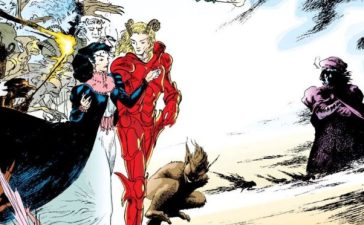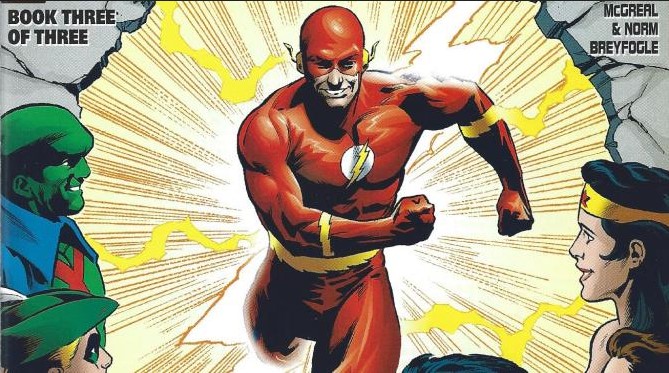
Flashback: A look at DC’s Elseworlds FLASHPOINT miniseries
“In Elseworlds, heroes are taken from their usual settings and put into strange times and places — some that have existed or might have existed, and others that can’t or shouldn’t exist. The result is stories that make characters that are as familiar as yesterday seem as fresh as tomorrow.” — Elseworlds tagline
DC Comics’ Elseworlds imprint allowed creators to present stories about the publisher’s superheroes that were set outside the characters’ established narrative continuity (for example, Batman fighting crime in Victorian Era Gotham, or in a puritanical America run by a corrupt theocratic regime). The imprint published mostly standalone graphic novels, but in 1999, the creative team of writer Pat McGreal, artist Norm Breyfogle, and colorist Noelle Giddings presented an alternate vision of superhero the Flash in an Elseworlds miniseries, the three-issue Flashpoint.
In honor of this week’s upcoming Flash Appreciation Day (February 11th), Nothing But Comics takes a look at Flashpoint and its portrayal of the Flash.
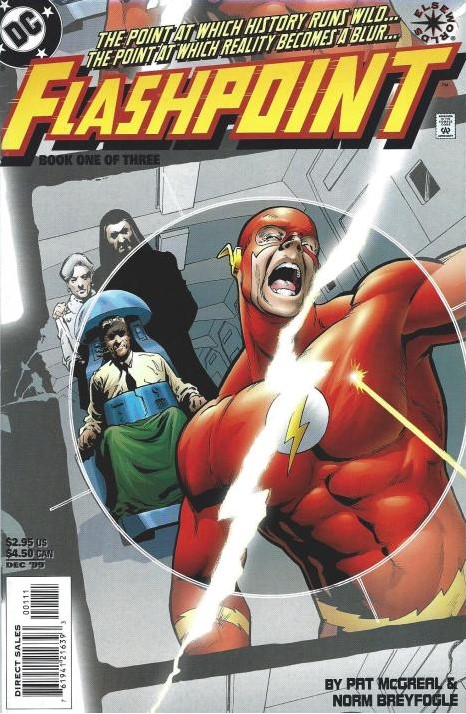
In Flashpoint, Barry Allen was the world’s first and only superhero, the Flash; the superhero appeared in 1956 (a nod to the character’s 1956 Silver Age debut in Showcase #4) and had a huge impact on society. Not only did the Flash use his super-speed to stop costumed criminals like Mirror Master and Captain Boomerang, but the hero’s covert efforts on behalf of the U.S. government led to the fall of Fidel Castro’s regime in Cuba and a U.S. victory in Vietnam; as a result of these activities, the Soviet Union fell in 1968. But Allen’s superhero career ended in Dallas in 1963, when he took a bullet intended for President John F. Kennedy; the bullet paralyzed Allen from the neck down.
Although Allen was no longer a superhero, his service to the world did not end. McGreal explains the premise in the backmatter of Flashpoint #2: “Flash…the Flash…fastest man on the planet…what hook could I hang on this character that would be different and yet appropriate to the Elseworlds concept? What I came up with were the opening sentences of my proposal: ‘Question: What if the fastest man on Earth is paralyzed from the neck down by a bullet to the spinal cord? Answer: The only thing left racing a million miles a minute is his mind…’”
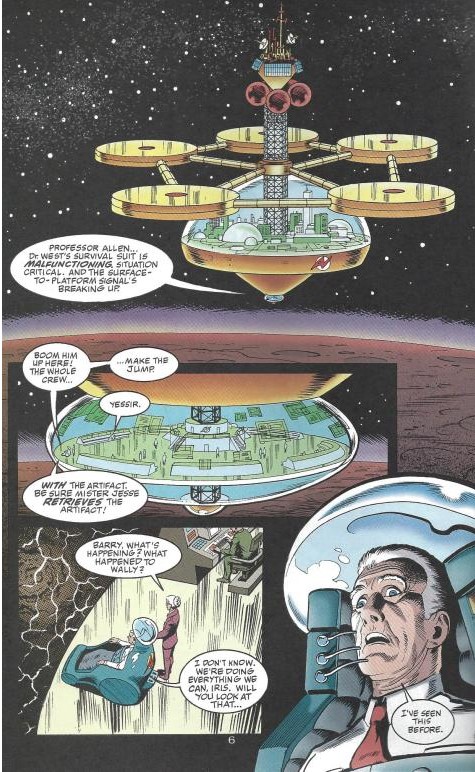
Just as Allen’s super-speed allowed him to physically change the world, it also allows his brilliant mind to advance scientific research. A grateful President Kennedy (who goes on to serve ten terms in office) appoints Allen to head the U. S. space program. Allen marries his sweetheart, Iris West, and, in partnership with his friend and fellow scientist Vandal Savage, develops teleportation technology (Flashpoint readers familiar with DC Comics continuity will recognize that Savage is an immortal supervillain).
Flashpoint opens in 1999, with an elderly Allen and Iris aboard a space station above Mars, monitoring an expedition on the planet’s surface led by their nephew, Wally West. The expedition is exploring the ancient ruins of the long-vanished Martian race and discovers an alien artifact. Wally touches the artifact and is struck by lighting, which gives him uncontrollable super-speed that causes him physical harm. Allen is haunted by the thought that the lightning that struck Wally is similar to the lightning that struck the chemicals in Allen’s lab years ago, giving him super-speed. Allen and Iris return to Earth with Wally and turn to Savage for assistance.
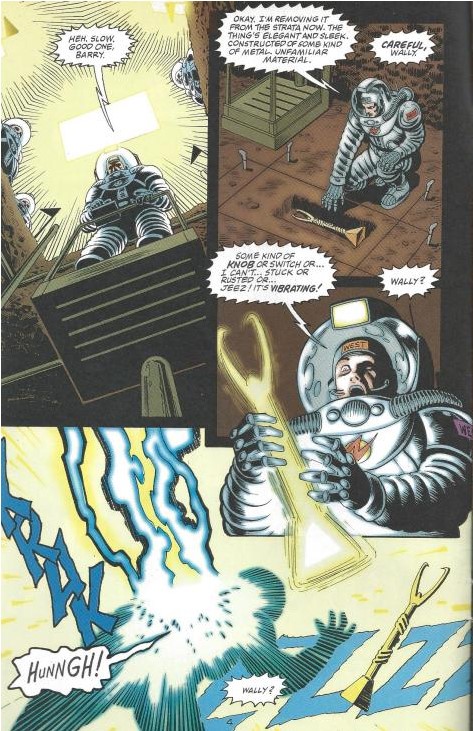
Meanwhile, private detective Ralph Dibny meets with a mysterious client in a dark theater at the Flash-Space Museum to share what he’s learned about the Mars expedition. At one point, Dibny uses a lighter to review his notes; the client panics and blows out the lighter’s flames with a powerful exhalation.
DC Comics fans will recognize Dibny as the alter ego of elastic superhero the Elongated Man, and the unnamed client — with his interest in Mars, fear of fire, and super-breath — is obviously superhero the Martian Manhunter; in Flashpoint, Dibny has no superpowers, and the Martian never became a superhero. In regular continuity, both heroes are detectives, and the creative team uses the two characters in Flashpoint as physical, street-level investigators that counterbalance Allen’s more cerebral and aloof viewpoint.
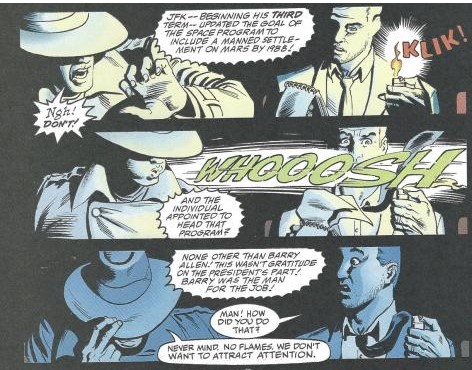
Flashpoint sets up two intersecting but stylistically different plotlines — Allen’s science fiction world of space stations and past superheroics, and Dibny and the Martian’s noirish investigation into the missing Martian artifact (which is stolen from Allen by an agent of Savage). Breyfogle’s art handles these two narratives skillfully. The artist depicts Dibny’s street-level gumshoe efforts with a dark and haunting intensity that readers might recognize from his well-regarded work with Batman, but he also renders gorgeous space stations and kinetic super-speed that is worthy of the Flash’s superhuman adventures.
More importantly, Breyfogle portrays the characters with a palpable sadness and weariness that is appropriate for the story. Despite Allen’s achievements, he is a sad, tired old man with no optimism or hope. He dreams often of his lost ultra-fast mobility and the adventures that he never had; he feels alienated from everyone, including Iris. Even Savage, who is usually portrayed as a heartless villain, seems melancholy and bored; Savage’s Earth-threatening scheme in Flashpoint is motivated not by greed or malice but by a desire to do something new and grand.
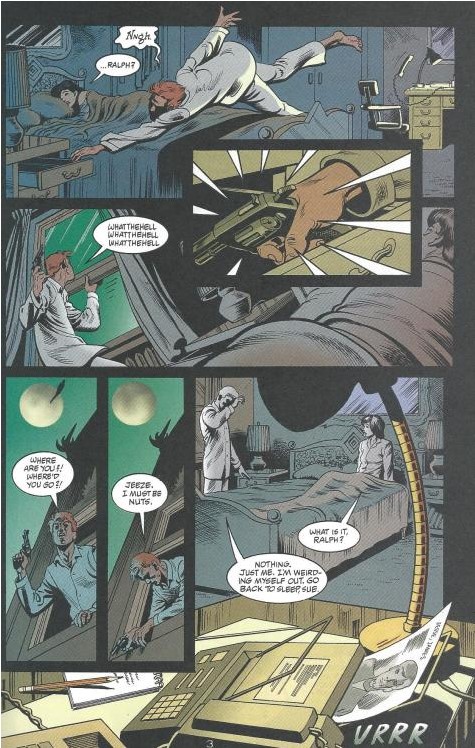
Breyfogle’s art is complemented neatly by Gidding’s colors. Dibny’s investigations occur in dark shadows, and the Flash’s past is depicted in grayish color. Allen’s sci-fi world of space stations and teleportation technology is bright, even if the character’s outlook is bleak.
The creative team uses the alternate reality Elseworlds setting to create a constant tension between knowledgeable readers’ expectations of the characters and the comic’s ongoing narrative. In Flashpoint, when we see characters like James Jesse or Leonard Snart in supporting roles, we know these characters are Flash’s enemies (the Trickster and Captain Cold, respectively) in regular continuity, and that these characters can’t be as benign as they are portrayed. We know that Savage is a vicious villain, and that his kindness toward Allen and Iris must be an act. As we read Flashpoint, we wait pensively for everything to unravel.
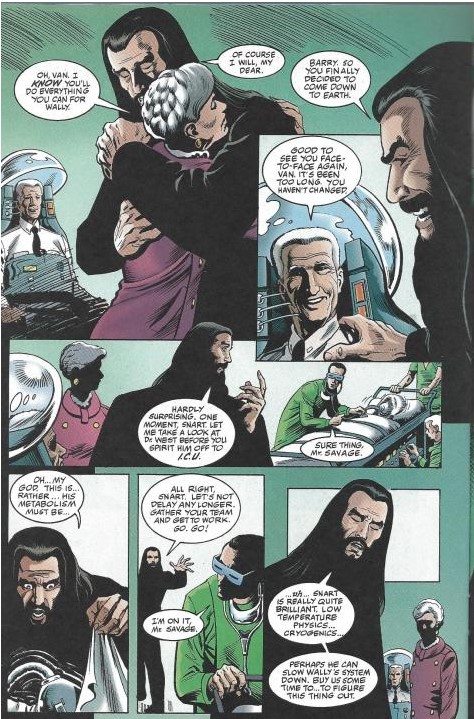
And then it does. Dibny’s mysterious client reveals that he is a Martian and that the stolen artifact destroyed Mars, killing every Martian but him by turning them into quantum energy. They learn that Savage has the artifact and the Martian fears that Savage might accidentally destroy Earth.
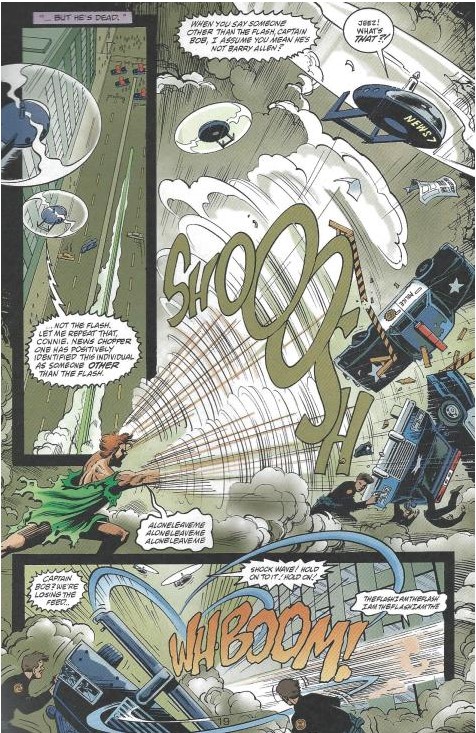
Wally dies in Savage’s care, but Allen and Iris encounter an escaped clone of Wally that Savage secretly created in order to continue his study of the artifact’s power. The clone has the power of super-speed but no control; Allen helps the clone, and gets his mobility back in the process.
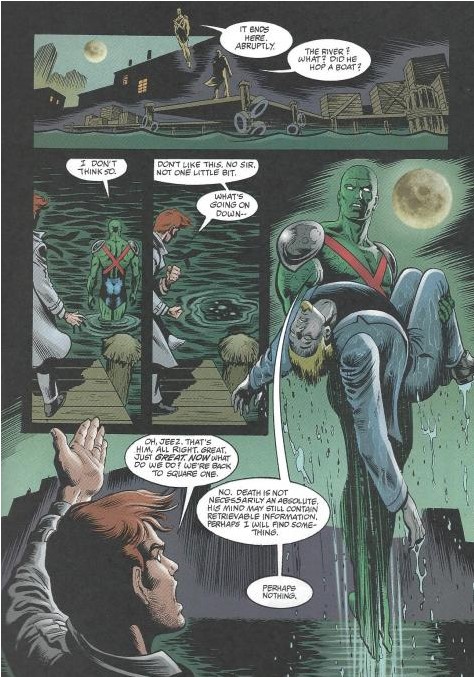
When the Martian fails to stop Savage, it’s up to Allen. Savage reveals to Allen that he was never a real friend; Savage only wanted to learn the source of the Flash’s powers, and he believes that the Martian artifact connects to that source — a “speed force” connected to a quantum “flashpoint” at the end of time that unites all realities.
Savage knows that the flashpoint energy the artifact can release will end all life on Earth, including his own, but he doesn’t care. He is too bored and too curious not to take action, and Allen, for the first time in years, gets up from his wheelchair and runs to save the world.
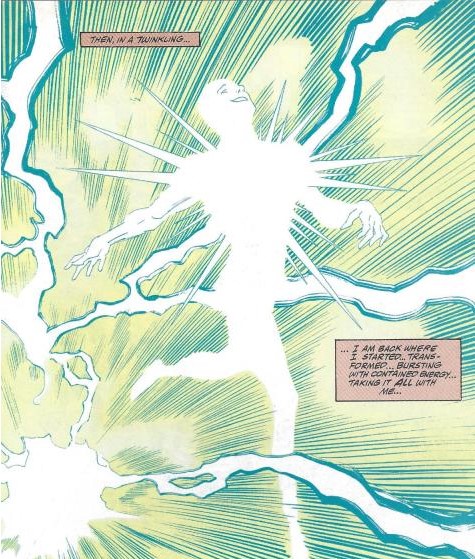
Flashpoint suffers from a few narrative flaws. The writer struggles to connect the two narratives and styles — the sci-fi heroism of the Flash and the noirish investigations of Dibny — and depends on awkward coincidences to bridge the two plotlines (for example, in the second issue, it is revealed that Iris is also a client of Dibny’s; the third issue reveals that the Martian was the acolyte of the scientist that created the world-destroying artifact, which also opened a wormhole that transported him to Earth; and the Wally West clone subplot seems rushed and unessential to the story).
Also, the story’s exploration of the significant impact that a superhuman would have on technology and society, including extending the term of a historic president beyond the two terms mandated by the U.S. Constitution, is distracting in its similarity to the graphic novel Watchmen (1986), in which superhuman Dr. Manhattan advances scientific knowledge, wins the Vietnam War for the United States, and consequently Richard Nixon serves five terms as president. These close narrative similarities make the Flash’s societal impact on the world in Flashpoint seem derivative.
However, with its great art, its focus on characters, and its tension between the expectations of comics fans and the alternate depictions of iconic characters, Flashpoint is an engaging story that portrays a sad hero regaining his strength and happiness in service to others.






